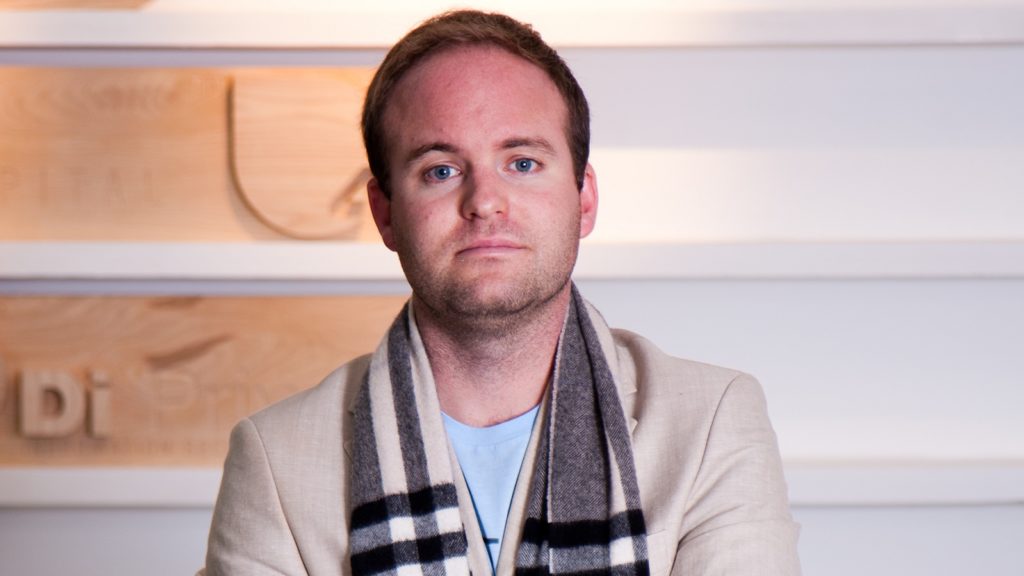The clock is ticking for Windows 10 users. With Microsoft’s official End of Support (EOS) deadline looming in October 2025, South Africans are being…
Market readiness key when investing in startups – 4Di Capital founder [Q&A]

For a venture capital (VC) fund, finding the perfect investment comes down to not only things such as investing in the “perfect” founders with the “perfect” tech — but to the market readiness of an investee’s product or service.
This, says venture capitalist Justin Stanford is probably the most difficult variable to get right when investing in startups.
Stanford’s Cape Town based VC company 4Di Capital, which he started in 2011, has so far made 14 investments.
“Some analysis of thousands of VC investments in the past has shown that market demand during the life of the investment is the most important success criteria. Often startups are too early, and sometimes just too late,” he added.
Ventureburn put a number of questions to Stanford on what makes a successful investment, what return the VC looks for from investments and how the VC company’s current portfolio is doing.
This is part of a series of interviews Ventureburn recently had with venture capitalists and angel investors in South Africa tech startup sector — see the footer of the story for links to other interviews).
Analysis of thousands of VC investments has shown that market demand is the most important success criteria, says 4Di Capital founder
While Stanford responded in length to most of the questions posed by Ventureburn, he added that he could not answer some of the questions, as while a fund is still “live”, it is a private fund partnership and bound up in confidentiality.
“None of our funds have matured yet, so we can’t really comment in detail. A typical VC fund lifespan is 10 and two years (10 years + the option for two years of overtime for late exits). Our first fund started in 2011 so it’s still got a way to go,” he said.
Read Stanford’s responses to Ventureburn’s questions below.
Ventureburn: What kind of return on equity do you generally look at?
Justin Stanford: It’s hard to answer, but as a fund we aim to return 35% IRR (internal rate of return) or 3x (three times their initial investment) to our investors.
VB: After how long do you typically look to exit?
JS: This is really situation dependent. However, I feel that it takes at least seven to nine years to create something of serious value. Our job as fund managers however is to optimise the exit for the best time-value. We have to do this all within the 10 to 12 year lifespan of the fund however.
VB: What percentage of equity do you usually look to take?
JS: This is dependent on the state and stage of the company, how we assess the risks, size of the round, amount of investors, intended use of funds, etc.
But as a rule of thumb, in the early stages a round will typically take around 20% to 30% of a company (Percentage equity isn’t the only aspect to consider, there are the terms as well, such as the liquidation preference, and many other deal dynamics).
As companies mature and raise larger growth rounds, these percentages may come down a bit as their valuation climbs, if they are doing well.
Our job is to carefully balance taking enough equity for a risk-adjusted return, while still ensuring that enough shares are still in founder hands, such that they are still the owners of the business and motivated to see it through, as well as allowing for future dilution from future rounds, and ESOP allocations (employee share ownership programme).
Other issues that we typically take into account are the quantum of the investment — it’s key that the upside with the investment has to balance the time to add value. Also, it depends on syndication opportunities, and an assessment of how much additional funding is likely going to be required further down the road.
Other key issues is whether one is taking the lead investor role or not, and sometimes the need to invest less money in more late stage businesses to balance out a very early-stage heavy portfolio.
VB: How many of your investments have had exits and how many are making really good growth?
JS: I can’t comment on portfolio specifics I’m afraid. Suffice to say in any VC fund you would expect to find a bit of everything you mentioned. That’s how VC fund economics work
“Really good growth” is hard to determine because it could be in R&D (research and development) terms that the company is growing (say, advancing and growing its patent portfolio), growth in users or customers, or it could be simply in sales revenue.
I would say in basic sales terms you want at least 50% to 200% revenue growth per year to be considered “really good growth”. You also get exponential growth, where the rate of growth itself is climbing, which is the ideal dream in a true scaling opportunity.
VB: Why would some investments be doing better than others?
JS: If there were just a few simple ingredients then we’d just look for those and only invest in those! There are a myriad of reasons… timing, execution, market shifts, fundraising, team… sometimes some have bad luck, some have good luck… the risks and opportunities are countless.
Ultimately if you want to create a good return for investors, you have to create substantial value, which someone else ultimately wants to acquire.
I think we all know what a valuable company looks like… among the attributes could be strong, defensible, useful, desirable IP and products; a commercial moat or lead; a solid customer base or good distribution; growing revenues; international expansion etc.
Some analysis of thousands of VC investments in the past has shown that market demand during the life of the investment is the most important success criteria. Often startups are too early, and sometimes just too late.
So the art is not only to have the “perfect” founders with the “perfect” tech etc. Timing (market readiness) is probably the most important variable that is often also the most difficult to anticipate when making the investment.
VB: Of those investments you have exited, what made them successful?
JS: I can’t comment on portfolio specifics, but I would say that there is a rule of thumb in VC around the world which is that more often than not good investments correlate to backing the right people.
Although outcomes can vary substantially up or down for a myriad of reasons, such as the aforementioned issue of timing, often a key element in long-term successful outcomes seen through to a good end is the founders and the team.
One way to look at it is that the right people is the satisfier, but that market timing is the motivator, ie not having the right people, then no success anyways. However having the right people and the timing is out of sync with market evolution also means no success.
VB: What are the names of the startups that have exited and then those that have an above targeted return on equity?
JS: I can’t comment on portfolio specifics.
VB: How many of your current investments have had second or third-round investments?
JS: I would say almost all of them have had or are in the progress of raising additional rounds. This is common in our space, as with VC a company typically raises an amount of money for a fixed period of time (usually 12 to 18 months), in order to make certain progress and pass through key validation gates, and then needs to raise more to keep going.
We usually look to broaden the investor base at this point, as this is a nice way to achieve some external validation as well as market pricing (independent valuation), but we will often “follow-on” and subscribe for a portion of the shares in any new rounds.
Most of our investing is syndicated with others anyways, even from the first round — we rarely invest alone.
Read more: HAVAÍC holds onto five investments despite two offers, says Ian Lessem [Q&A]
Read more: Jozi Angels wants R8m return from R400k invested per startup [Q&A]
Read more: Startups need at least 10x in 5 years to be good investment – VC, angel investors
Featured image: 4Di Capital founder Justin Stanford (Supplied)

